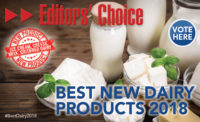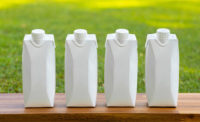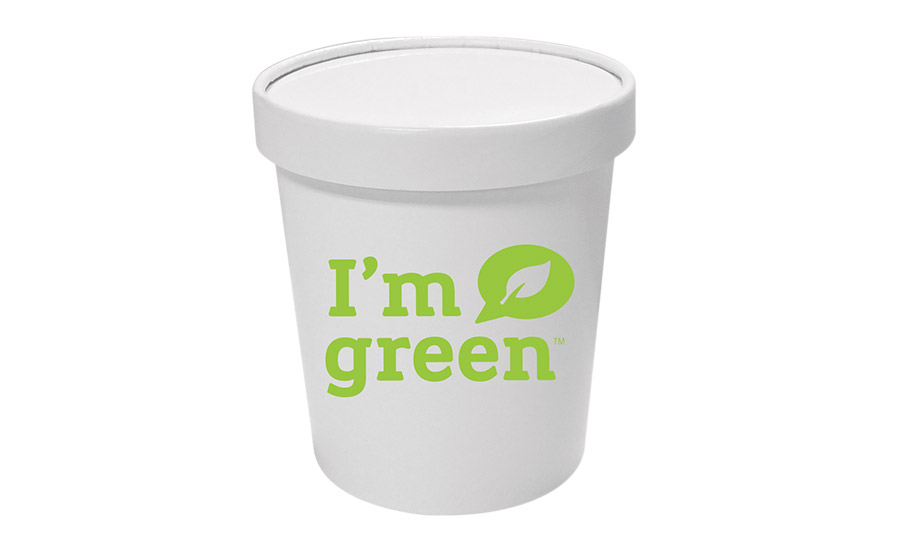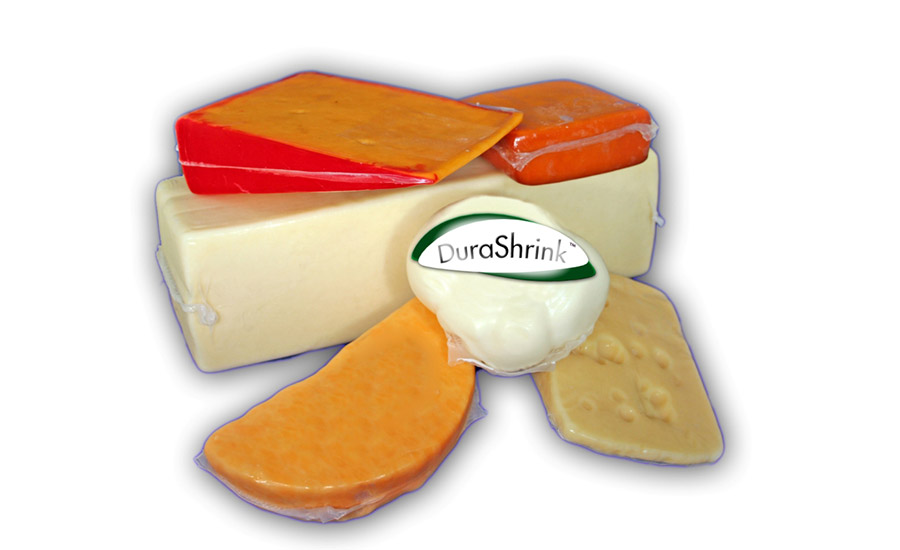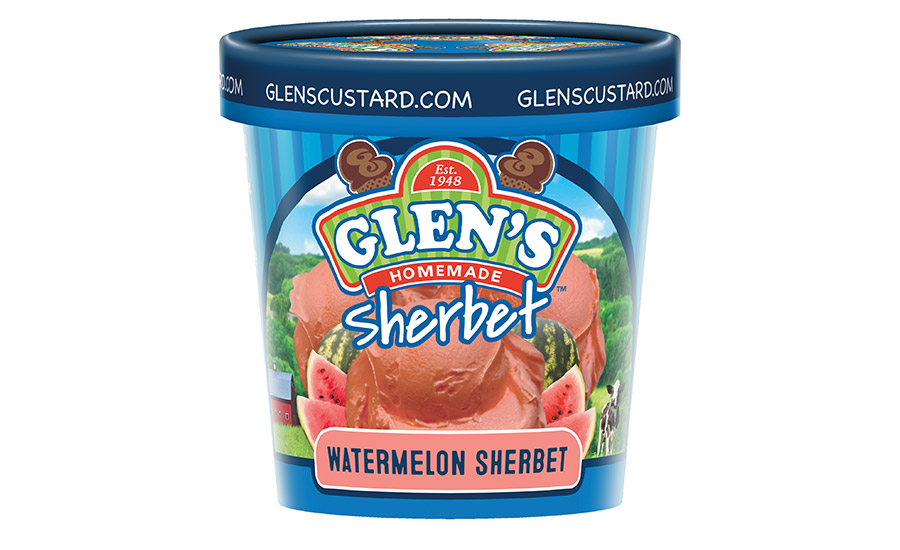‘Green up’ your dairy packaging
Consumers — millennials and younger consumers, in particular — are prioritizing packaging sustainability and are willing to pay for it.

Tetra Pak cartons are made primarily from paperboard that is harvested from responsibly managed forests. Photo courtesy of Tetra Pak

PaktoEarth Raws-Tech pro-degradant additive, blended with recycled or virgin plastic, results in plastic that will decompose in both commercial and home compostable environments. Photo courtesy of Twelve8 Technology

Sentinel ice cream packaging uses polyethylene made from the husks of renewable sugar cane to seal ice cream cups. Photo courtesy of Stanpac Inc.

The PlantCarton line of packaging solutions boasts a renewable resource content of more than 70%. Photo courtesy of Pactiv Evergreen Inc.

Launched in 2020, the Pure-Pak Imagine carton contains 46% less plastic and includes an easy-open feature. Photo courtesy of Elopak

Cheese processors looking to eliminate chlorine-containing compounds from their packaging could take advantage of the Durashrink RSEV shrink bag product line. Photo courtesy of Winpak Ltd.

Visstun recently partnered with Sustana Fibers to include 35% post-consumer recycled fiber in the sidewall of all of its paper cups, containers, and lids. Photo courtesy of Visstun

Syntegon Technology Services performs research and tests and develops new approaches, aiming to assess the processing parameters of potential packaging materials such as paper or polypropylene mono-material. Photo courtesy of Syntegon Technology Services








When it comes to their sustainability efforts, dairy processors would be wise to count product packaging as a critical element. According to the U.S. Environmental Protection Agency, containers and packaging make up a major portion of the United States’ municipal solid waste, amounting to 82.2 million tons in 2018 alone (the latest year for which data are available).
Waste is not the only packaging-sustainability issue, either. For example, packaging production often relies on nonrenewable source materials and nonrenewable energy.
A consumer priority
Most of today’s consumers are aware of packaging’s potential negative environmental impacts — and they are prioritizing sustainability. Moreover, the COVID-19 pandemic actually worked to elevate consumers' focus on sustainability, according to a new IBM Institute for Business Value survey of more than 14,000 consumers in nine countries. More than half (54%) of consumers surveyed said they are willing to pay a premium for brands that are sustainable and/or environmentally responsible.
“Consumers like never before are paying attention to all aspects of sustainability,” says Murray Bain, vice president of marketing for Stanpac Inc., Smithville, Ontario. That focus ranges from “the product itself and the perception it has on the impact to the environment through to the packaging and its carbon footprint or recyclability.”
Katie Simmons, marketing director for Memphis, Tenn.-based Pactiv Evergreen Inc., concurs, noting that consumers increasingly are looking for more sustainable and more healthful products. That focus extends to the packaging, with priorities on recyclability and renewability.
“These trends are being driven by millennials and younger generations,” she says, pointing to findings reported in Pactiv Evergreen’s 2021 whitepaper titled “How Millennials Will Change Packaging Forever.”
More than half of consumers — 54% — consider sustainable packaging in product selection, adds Anthony Harrison, CEO of Australian company Twelve8 Technology (PaktoEarth).
He agrees that younger consumers are “leading the charge,” with 83% of those aged 44 years and younger reporting that they are willing to pay more for sustainable packaging.
That is why it is also important for dairy brands to clearly communicate any packaging sustainability efforts.
“Be sure to optimize renewability and recyclability communications on your package,” Simmons advises. “Consumers are looking for retailers and brands that are placing a priority on sustainability, so be sure to give consumers more information about their packaging’s sustainability story.”
Definition, please
What, exactly, makes a dairy package more sustainable?
Recyclability is one attribute that scores high on the sustainable packaging checklist. Today, more than two-thirds of consumers (67%) count packaging recyclability as important in products they buy, Harrison says.
“Consumers are looking for recyclable or compostable in most cases,” adds Paula Thompson, director of sales for Visstun, Las Vegas. “Often, they don’t realize the difference they can make simply by having post-consumer recycled fibers in their cups.”
More consumers are demanding packaging solutions that have a minimal impact on the planet, too, notes Jonathan Viens, head of sales and marketing for Syntegon Technology Services, with U.S. headquarters in Raleigh, N.C.
“Dairy producers are having to reconsider conventional packaging concepts with regard to plastic and recyclability and will increasingly rely on renewable raw materials,” he says. “For example, plastic snap-on lids for yogurt cups will gradually disappear from the refrigerated section and be replaced by new solutions that reduce the packaging’s overall plastic content.”
New concepts to replace snap-on lids for refrigerated beverages also are under development, Viens notes. Some early concepts include peel-off lids with integrated openings for drinking and reusable lids.
“Besides reducing the plastic content and improving recyclability, the environmental impact of [such] packaging also extends to lower carbon emissions, thanks to less packaging weight and less product waste,” he states.
Mai Doherty, senior operational marketing manager, United States and Canada, for Pully, Switzerland-headquartered Tetra Pak, says consumers’ heightened awareness of the overall impact of their purchases is opening up more opportunities for packaging produced from renewable materials.
“Tetra Pak cartons are made mainly from paperboard harvested from responsibly managed forests,” she points out. “We also have made great strides forward in our use of plant-based plastics derived from renewable materials like sugarcane.”
When it comes down to it, dairy processors need to understand that sustainability goes beyond package recycling. It encompasses so much more — the overall use of resources, the renewability of resources used and minimization of the carbon footprint, explains Patrick Verhelst, chief marketing officer for Oslo, Norway-based Elopak.
“Sustainable packaging can also help brands signal their commitment to the environment and becomes another mechanism for communicating a product’s organic, ‘green’ and environmental credentials,” he adds.
If the packaging does not keep food safe and protect its quality, however, any sustainability tweaks are for naught.
“It should extend the shelf life of the food it is protecting and, therefore, contribute to reduced food waste,” says Phillip Crowder, director, corporate sustainability for Winpak Ltd., Winnipeg, Manitoba.
The packaging also needs to be convenient for consumers to use and communicate any important nutritional information, he adds.
“Consumers are more aware of the end-of-life scenarios for packaging and are pushing brands and packaging converters like Winpak to develop sustainable options that are recyclable, contain recycled content or are compostable. However, these sustainability benefits cannot come at the expense of these other attributes.”
Where to begin
So how could dairy processors up the sustainability quotient of their product packaging without compromising product quality and food safety? A good starting point calls for working in collaboration with their packaging partner(s).
“Converters and brand owners have collaborated to minimize packaging overall, extend product shelf life and ensure that food safety and quality are maintained with today’s packages,” Crowder says. “It is recognized that end-of-life management is currently falling short of expectations in some cases, but companies throughout the value chain are working to change that.”
He notes that dairy processors are partnering with companies such as Winpak to assess “newer mono-material, recycle-ready structures that will better fit into recycle streams as infrastructure improves.” However, these processors need to adapt their equipment and operations to these innovations.
“Although they can oftentimes process on the same equipment, these new packaging innovations are not just simple drop-ins,” Crowder explains. “Companies like Winpak, though, have experienced sales and technical staffs capable of guiding processors through adjustments.”
On the dairy beverage side, cartons have stronger “environmental credentials” than plastic bottles, notes Verhelst. In fact, a 2018 lifecycle assessment (based on the German market) performed by the Institute for Energy and Environmental Research found that for ultra-high-temperature (UHT) milk, cartons were associated with 70.7% less carbon dioxide emissions. For fresh milk, he notes, that number shot up to 83.6% (in comparison to PET bottles).
Doherty agrees that cartons can help processors on the packaging sustainability front. They also bring other advantages to dairy beverage manufacturing operations.
“The cartons ship to the manufacturing facility flat, on rolls, which eliminates the need to store empty containers,” she explains, “and they are lightweight and compact, making them more efficient to transport. The carton shape also saves space in stock rooms and on store shelves as compared to round bottles or jugs.”
And Tetra Pak’s aseptic cartons — recyclable and made from “wood fiber from forests where trees keep on growing” — also require no refrigeration, Doherty points out. That reality also results in energy and costs savings throughout product storage and transport.
“With a longer shelf life being made possible, this reduces spoilage and, in turn, reduces food waste,” she adds.
Other dairy processors are thinking “outside the carton” for packaging sustainability improvements. For example, Verhelst says Sweden’s second-largest dairy, Skånemejerier, worked with Elopak in 2020 to remove the caps on all of its Hjordnära 1l organic milk cartons.
“Following the move, consumers who contacted the dairy via social media and its customer service department expressed an overwhelming preference for the new easy-opening feature, with 79% favoring packaging without the plastic screw top,” he says.
There are also sustainability-minded tweaks available for more traditional dairy beverage packaging — HDPE milk bottles and the like. Harrison says PaktoEarth Raws-Tech pro-degradant additive, blended with recycled or virgin plastic, prevents the resulting packaging from languishing in a landfill for years and years. The plastic will decompose in both commercial and home compostable environments. (According to the PaktoEarth website, the “plastic breaks down to earth’s natural conditions by either sunlight, thermal atmospheric heat or heat within anaerobic waste management to air, water and less than 1% harmless biomass salt.”)
“Within two years, the plastic will be plastic no more,” he explains. “It will naturally decompose, leaving behind no microplastic fragments.”
Sustainability-minded innovations also can be found within the ice cream space. For example, Stanpac’s Sentinel ice cream packaging uses polyethylene made from the husks of renewable sugar cane to seal ice cream cups, Bain says.
“This has been particularly popular with plant-based frozen dessert brand owners,” he notes. “The packaging and the product itself [are] plant-based.”
More recently, Stanpac introduced a paperboard product called Nuvo into its ice cream packaging. According to Bain, it allows “regular” polyethylene to be reduced by more than 60%, and the paperboard can contain as much as 30% post-consumer fiber.
The PaktoEarth Raws-Tech additive also is a sustainability fit for the ice cream space, having been tested to a temperature of minus 14 degrees Fahrenheit, Harrison says.
Newer and soon-to-come solutions
Dairy processors also could consider even newer and soon-to-come sustainable packaging options.
For its part, Visstun recently took steps to address what Thompson calls the “recycling crisis” in the United States by partnering with Sustana Fibers to include 35% post-consumer recycled fiber in the sidewall of all of its paper cups, containers and lids.
“Consumers and brands get caught up in the ability for a cup to be recycled,” Thompson says. “Ultimately, unless manufacturers are using the recycled material, it goes nowhere. Visstun is helping to create demand for the post-consumer recycled fiber.”
And Winpak now offers the ReFresh recycle-ready line of flexible packaging innovations. As Crowder explains, the mono-material polyolefin offerings comprise packaging materials that are suitable for horizontal form-fill-seal, pouch and flow-wrap applications.
“ReFresh materials have durability, good oxygen and moisture barrier, and excellent optics for printing and showcasing product contents,” he points out.
Winpak recently introduced a line of semi-rigid forming and flexible non-forming films containing post-consumer recycled APET content, too. They feature 15% to 75% post-consumer recycled material and boast excellent barrier and mechanical properties, Crowder notes.
“Finally, for cheese processors looking to eliminate chlorine-containing compounds from their packaging, Winpak offers its Durashrink RSEV shrink bag product line,” he says. “This durable shrink bag has good barrier properties, excellent optics and no chlorine-containing materials.”
One of the latest sustainability-minded packaging innovations from Elopak, meanwhile, is the Pure-Pak Imagine carton, Verhelst says. Launched in 2020, the carton represents a modern take on the company’s original Pure-Pak carton. It contains 46% less plastic and includes an easy-open feature.
“It has no plastic screw cap and is 100% forest-based, making it Elopak’s most environmentally friendly carton to date,” he says.
Multinational dairy cooperative FrieslandCampina recently shifted its Campina Organic line to the new packaging, Verhelst notes, in keeping with its “nourishing a better planet” sustainability program.
“The new packaging saves 38% CO2 emissions compared to the old packaging, with the remaining emissions compensated to ensure it remains climate-neutral,” he adds.
For Pactiv Evergreen, the PlantCarton line of packaging solutions represents the latest and greatest in the sustainable packaging space. The products boast a renewable resource content of more than 70% (paper), Simmons says.
“Pactiv Evergreen cartons are made from trees grown in forests where responsible forestry practices are used, the overall rate of growth exceeds removal and environmental impacts are minimized,” she explains. “About 55% of the energy used to make the paper in PlantCarton packaging comes from biomass. And cartons are recyclable — brands that package their products in PlantCarton packaging can take advantage of this great sustainability story.”
Pactiv Evergreen also demonstrates its dedication to responsible forestry by maintaining three different forestry certifications via third-party audits.
And Stanpac has plans to introduce a polyethylene-free ice cream cup later this year, Bain says.
“The sealing and moisture-resistant layer will be a water-based dispersion coating that can be fully recycled,” he explains. “This will be a game-changer for our customers. After use, cups can easily be recycled along with normal paper and board waste.”
Although Tetra Pak understands that its paper-based cartons have a lower carbon footprint than many alternative packages, the company knows it can do better. Moreover, that is what it is aiming to do. The company recently announced its ambition to deliver the “world’s most sustainable food package,” Doherty says.
The company is considering five criteria in defining this package, she notes. These include being made of fully renewable or recycled materials; being responsibly sourced and representing a reduced impact on nature; contributing to carbon-neutral production and distribution; enabling a convenient, safe and resilient food system; and being fully recyclable while supporting an effective recycling system.
“It requires significant breakthroughs in several technologies — for the materials used, the packaging material structure [and] the process and the equipment that will be used to create and fill these packages,” Doherty says.
Examples include the introduction of new renewable polymers and the expansion of existing ones, simplification of the packaging material structure and increased fiber/paper-based content, innovation related to equipment and processes to support structural changes and more, she says. To get there, Tetra Pak will be investing approximately 100 million euros per year over the next five to 10 years.
“In fact, this year we launched a market trial of an aseptic packaging with a nonaluminum barrier, and we expect several trials of packages with increased renewable and fiber content over the coming months and years,” Doherty says. “We’re making good headway and will launch progressively more sustainable packaging solutions by 2025, with the ambition to create an aseptic packaging that is made from fully renewable or recycled materials — and that is fully recyclable and carbon-neutral — before 2030.”
Custom sustainable packaging solutions also spell opportunity for dairy processors. In its testing labs in Florida and Germany, Syntegon performs research and tests and develops new approaches, aiming to assess the processing parameters of potential packaging materials such as paper or polypropylene mono-material, Viens notes.
“The testing lab facilities are fully equipped to perform and evaluate germ reduction and product-filling tests in small quantities to ensure product safety,” he says. “This supports customers in their transition to sustainable materials since it allows them to predict necessary machine adjustments and effects on the product.”
That type of collaboration, with both packaging material suppliers and customers, helps Syntegon develop “individual solutions to retrofit existing systems,” Viens says, making quick changes between different materials on the same filling line possible.
“However, there is still huge potential for development,” he points out. “Finding sustainable packaging solutions for our customers is a complex process that is influenced by many parameters. … We are continuously working on innovative technologies that meet the highest product requirements while minimizing the impact on our planet.”
Looking for a reprint of this article?
From high-res PDFs to custom plaques, order your copy today!





